Aiptasia Eaters: Eradicating This Pest Anemone
Aiptasia is a monster of a problem for some. There are a few ways to eradicate them. Some people buy products designed to inject into their bodies. Some even use electricity to cook the you-know-whats. Even lemon juice, vinegar, and kalkwasser paste are a common, cheap, and effective way to kill them. However, some are hard to find and can easily repopulate the visual areas within a week, causing a never ending struggle and a constant risk for fish and/or corals. Sometimes you need to call for backup. Luckily, the ocean has a predator for nearly everything with the exception of a few evolutionarily advanced creatures. Aside from plain aggression and territorialism, predators in the wild do not kill to kill. They kill to eat. So what in the see eats aiptasia?
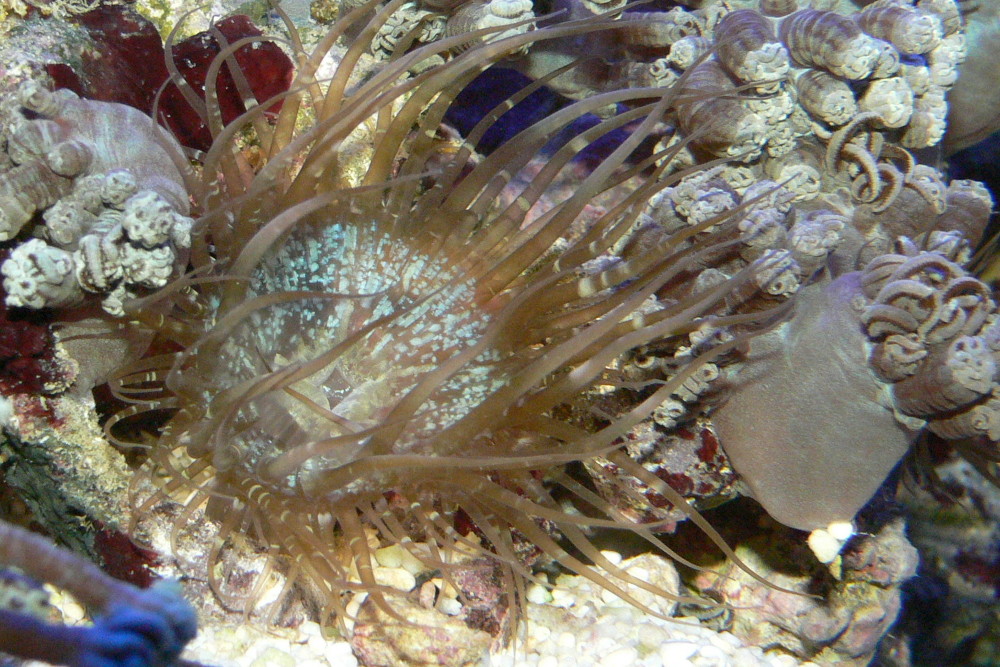
closeup photo of aiptasia anemone: note how it stings coral close by
The Berghia Nudibranch is one of the only animals that relies solely on aiptasia for their nutrition. In a tank with no aiptasia you will starve a Berghia nudibranch very quickly. The animals are small and not easily spotted. On average, If you see one aiptasia, there are 10 more hiding. This is why it is so hard to eradicate them manually. To completely rid your tank of these pests you need to start with about 10 nudibranches. No other species will work. ONLY USE BERGHIAs! If your tank is pretty populated with aiptasia the nudibranches will eat and breed until they have eliminated their food source, which is a great time to catch as many as you can and trade them to the next aiptasia infested hobbyist. Nudibranches are predated by shrimp, so if you have peppermint shrimp as aiptasia control you will loose all of your nudibranches before they have a chance to populate and eat.
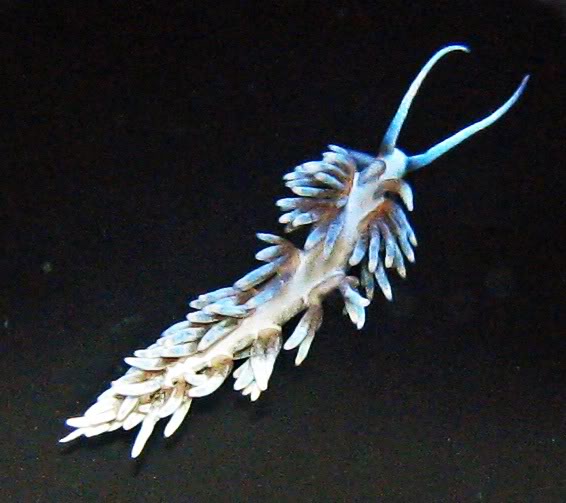
macro berghia nudi image via oceangalleryii
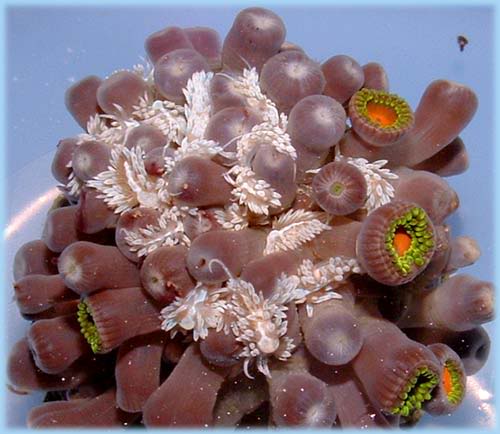
berghia nudis eating aiptasia anemones that were situated in between the polyps of this coral colony: image via www.saltyunderground.com
Peppermint Shrimp are not as likely to eat aiptasia, but ones that do will eat them like crazy. It is amazing watching a shrimp devour one. They get into most small spaces and will hunt them down all night. The downside to peppermint shrimp is that they do have a varied diet. Some may never even touch an aiptasia in their life while others will hit each nemesis it sees immediately.
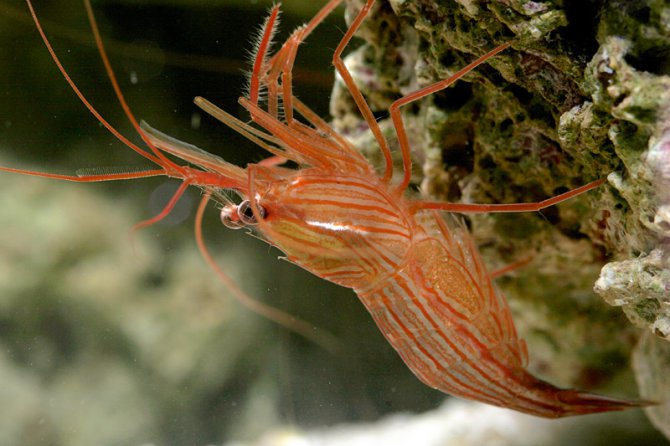
peppermint shrimp image via practicalfishkeeping.co.uk
Aiptasia Eating Filefish are a very strange shaped fish. They resemble a trigger fish that has been carved from tree bark and wrapped in aluminum foil. They have funny shaped fins, like a trigger, that allow them to lock into place. Their mouths are designed like a tang’s and can fit in most nooks. These fish are not dependent on aiptasia, so getting them to eat one is a game of luck.
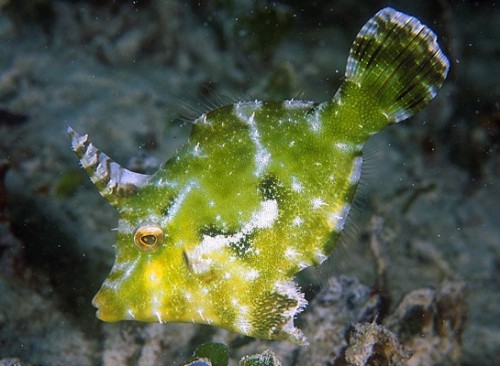
aiptasia eating filefish image via aquaanimania.com
Copperband Butterflyfish are another aiptasia eater, but only if they develop an appetite for them. The fish is a delicate species that most hobbyists have trouble keeping fat. If you have regular aiptasia problems you most likely are still on the level of noob and should avoid advanced species that require extra attention. These fish are often wild caught and by the time they make it to your LFS they are exhausted and starving. The particular fish may have already been accustomed to an aiptasia diet and the LFS is trying to feed it shrimp or flake food without realizing what these fish are designed to do.
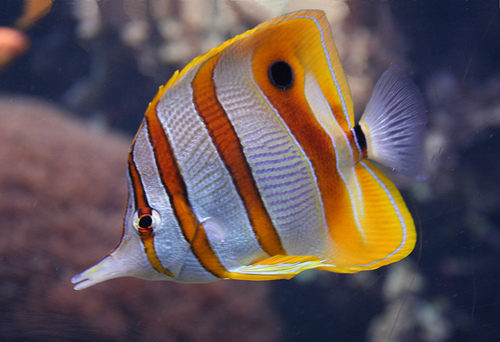
copperband butterfly fish image via library.thinkquest.org
Aiptasia removal can be a chore. If your fish or shrimp is not eating them you can attempt to train them to. Simply setup a quarantine tank with a rock that has aiptasia on it and leave the creatures in the tank for a week or so. Do not feed them. Once they get hungry enough they begin to forage through the rock and may stumble onto the aiptasis, thus triggering their need to eat more. If they still do not want to try to eat one you can actually take a large aiptasia, chop it up as best you can, and dump it in the tank with the fish like you would mysis shrimp. The floating particles will entice curiosity at the very least and possible help them acquire the taste for your worst enemy. Once they seem to enjoy eating them you can try to put them back in your display. It is best to try to remove or kill the larger aiptasia to help the animals focus on the smaller hard to reach ones.
There are tons of ways to prevent and eradicate aiptasia. If you have a problem in your tank you can post it in the REEF DISCUSSION FORUM and we will help you! Always pay attention to the rocks and frags you buy. Hitch hikers do not put up No Vacancy signs when occupying your stuff so you will need to just assume they are already there. Good luck and have fun watching your new critters help you fight the evil aiptasia!
To stay up to date on the latest saltwater reef aquarium topics and news sign up for a FREE account here!
